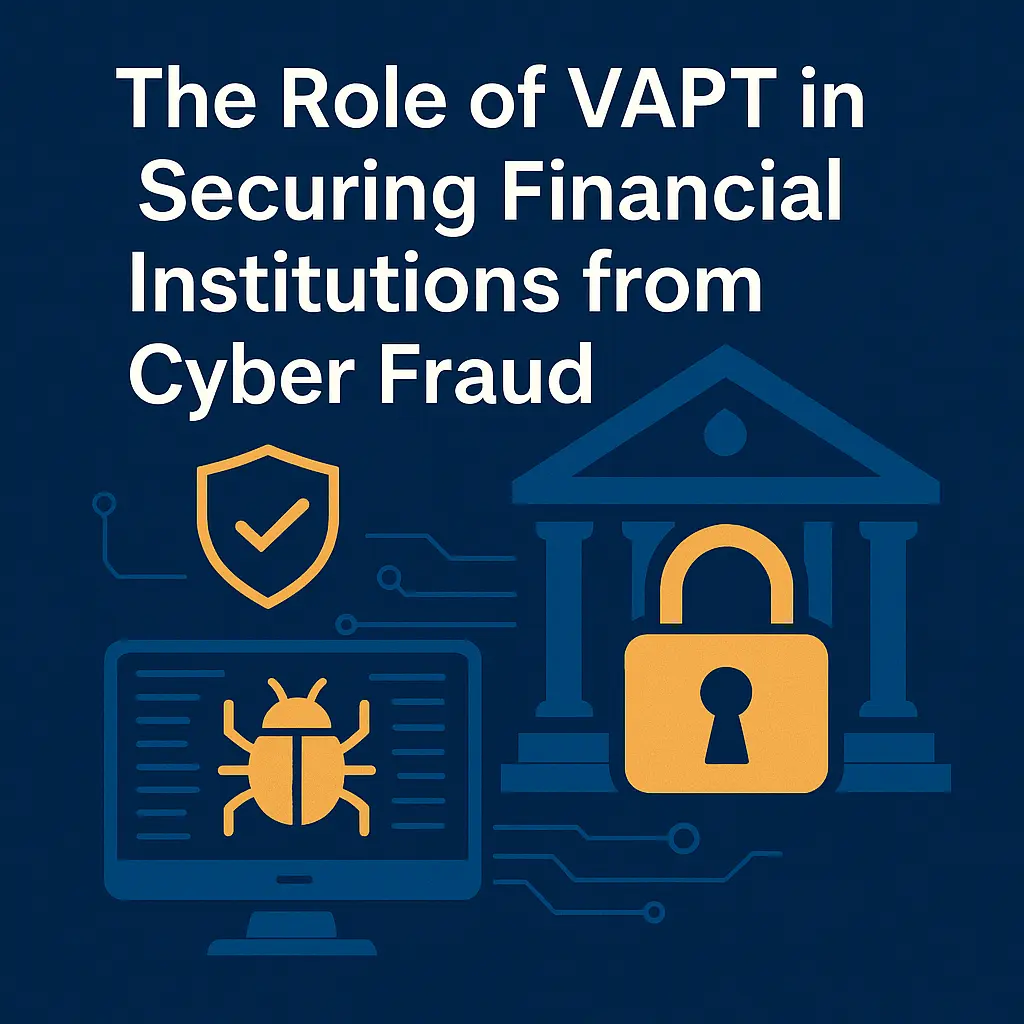Securing Financial Institutions: The Critical Role of VAPT in Preventing Cyber Fraud

From simple to sophisticated, frequent to catastrophic, cyber threats have evolved in the hyperconnected financial environment of today. From APIs to mobile banking apps, any digital interaction might give hackers access. Not only does banks, NBFCs, insurance companies, and fintech startups have a commercial necessity for protecting private financial data and digital infrastructure—but also an IT chore.
Penetration testing (VAPT) is among the most useful instruments available in a cybersecurity toolkit. It’s not only about calling out errors; it’s also about stopping disastrous leaks, keeping customer confidence, and following ever stricter legal guidelines.
The Terrifying Rising Cybercrime Rates in Banking
Among the most singled out sectors exposed for cyberattacks is the financial one. Industry estimates indicate that 25% or so of all cyberattacks worldwide aim for financial services. The great value of credit card numbers, transaction records, personal identities, bank account information attracts attackers.
Common attack points in digital banking systems are:
- Phishing attempts aiming at staff and consumers
- API exploitation
- Ransomware attacks on infrastructure
- Mobile banking trojans pilfering passwords from consumer apps
Every effective hack affects customer confidence as well as substantial financial ramifications and regulatory fines.
Why VAPT is Most Crucially Important for Financial Institutions
Designed to aggressively find and fix IT system flaws in a corporation, VAPT is a strict plan. It mandates:
- Vulnerability Assessments (VA): Automated scanning spotting recognized weaknesses
- Penetration Testing (PT): Designed attacks meant to take advantage of weaknesses and seize the actual impact
These strategies used together provide a whole picture of a company’s security position.
Main advantages for companies in the finance sector:
- Looking after priceless items
o Financial systems have really valuable data jewels in them.
o VAPT promises that essential banking systems are safe from both internal and external threats
o Client PII and transaction data are safeguarded
o Mobile and web apps are tested to OWASP list of top ten flaws
- Legislative Compliance
o Regular security audits for controlled financial institutions are mandated by India’s RBI Cybersecurity Framework, SEBI Guidelines, and PCI-DSS
o By means of evidence-based reporting, VAPT aids authorities and auditors with due diligence
o Helps avoid significant fines from non-compliance
o Streamlines audit procedures
- Continuity in Economic Development
o A good cyberattack could cause data loss, disruption, and compromising of services
o VAPT finds weak places before attackers strike
o Allows quick repairs and lowers the risk of corporate interruption
- Customer Confidence
o Digital age confidence is money
o Regular VAPT builds consumer and stakeholder confidence
o Actively safeguards your systems, especially amid weekly security breachesmaking news
Useful Guides on Probable Breach Avoidance
Imagine a sizable Indian cooperative bank whose cybercrime from illegal SWIFT transactions comes to ₹94 crore. The study turned up weak internal controls and no proactive security testing.
Such events highlight the need of:
- Creating attack scenarios
- Closing security flaws before they are used
- Regular VAPT to point out weaknesses found in:
o Staff access controls
o Outside integrations
o Core banking systems
The Right Approach to VAPT for Finance
Organizations should:
- Engage certified cybersecurity firms that specialize in financial systems and are familiar with RBI/SEBI guidelines
- Include testing for:
o APIs
o Cloud infrastructure
o Mobile banking apps
o Online-facing portals
- Integrate VAPT findings with internal risk management processes
- Opt for red team exercises occasionally to simulate real-world targeted attacks
- Ensure vulnerabilities are tracked, prioritized, and remediated
Terminals
VAPT is no more optional in a time when digital banking is growing and cybercrime is changing quickly; rather, it is a basic element of every financial institution’s security and risk management plan.
What counts most among things it helps preserve are data, trust, and organizational continuity.
Frequent vulnerability tests and penetration tests help financial companies not only follow rules but also demonstrate increasing dedication to cybersecurity.
It’s about being tenacious, constant, and proactive in a setting where even one hack might have long-term financial and reputation effects.
